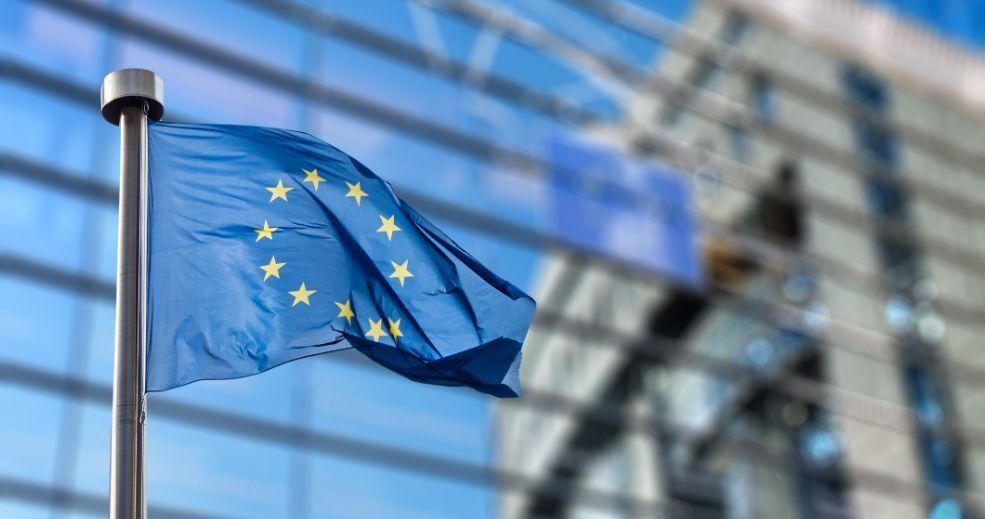
The new frontier of the European economic security imperative
The European Commission presented the European economic security strategy on 20 June followed by its updated Strategic Foresight Report on 6 July.
European institutions are stepping up their engagement with questions concerning the European Union’s economic security, with a number of initiatives already underway:
- The industrial strategy, updated in 2021, which calls for industrial alliances (aimed at boosting activity in clean technologies, raw materials, processors and semiconductors, data and the cloud) and Important Projects of Common European Interest (IPCEIs) (aimed at pooling resources to support radical innovation, promote the circular economy and strengthen ecological and digital skills)
- The Critical Raw Materials Act, aimed at facilitating the extraction, transformation and recycling of critical raw materials within the European Union
- The European regulation on semiconductors (the European Chips Act)1, which aims to guarantee security of supply
- The Net-Zero Industry, aimed at increasing production of goods generating net-zero emissions
Why a European security imperative?
The traditional concept of security is in the process of being redefined by European institutions. The latter have taken a while to notice that the model of a world order based on multilateralism and globalisation has been largely called into question. There is now an awareness that the issue of security incorporates a number of new dimensions, one of which is the economy. The need to rebalance international openness with instruments that ensure the prosperity of the European Union (EU) and take into account economic security is the new paradigm that will shape EU foreign policy over the coming years2.
Compared with the EU’s 2022 Strategic Compass3, the European Commission’s latest Strategic Foresight Report goes into more detail on the risks and threats facing the EU. It says China is moving into a new era focused on economic influence and diplomatic assertiveness and targeting a systemic change in the international order. It continues to describe China as a systemic rival and economic competitor at the same time as considering it a multilateral partner. The report also illustrates the EU’s more clearsighted view of the transformation currently taking place in the United States, which is tightly integrating domestic and foreign policy, strengthening its industrial base, protecting next-generation technologies and forming deeper economic partnerships with aligned countries. The US continues to be the EU’s strategic partner. The European security strategy is designed to be indifferent to the “country dimension”: since threats can evolve over time, it does not target any particular country. However, it will use a geopolitical filter to assess risks, reflecting the behaviour of third countries. This means it will not treat the issue of reliance on a systemic rival for supplies the same way as it treats reliance on an ally4.
These changes in the strategic orientation of China and the US are fanning the flames of global geopolitical, economic and technology rivalry. This intensifying geo-economic clash is now playing a greater role than the principles of a free market and free trade in reconfiguring global trade and investment. This is increasing the risk of trade restrictions and supply chain disruption and hampering the circulation of goods, services and technologies. It could also make the EU more dependent, including when it comes to accessing essential raw materials critical to transitions, and cast doubt on the survival and development of the EU’s strategic sectors. Policies that were previously relegated to individual countries must increasingly be conceived with the global order, and especially the European framework, in mind. The EU can no longer ignore the drivers of large-scale competition between superpowers; it must upgrade its tools for defending the single market and expand its political options.
A new era of confrontation: control over strategic technologies
The EU has already taken action against economic coercion and the instrumentalisation of economic dependence through its anti-coercion instrument and its regulation providing a framework for the screening of foreign direct investment. It is beginning to raise awareness among private sector stakeholders of the urgent need to diversify supply chains and secure value chains, from the very earliest stages of the knowledge creation process right through to the manufacturing and commercial phases. It is also making headway in protecting critical infrastructure.
The EU has also done more work on promoting and protecting its competitiveness and is beginning to focus on maintaining and developing its technological lead and technological sovereignty. That’s the goal of the Strategic Technologies for Europe Platform (STEP) proposed by the Commission in its economic security strategy.
It now needs to enter the new battleground in the strategic competition between superpowers: the most advanced technologies that could help modernise and strengthen the military capability of rival powers and technologies of the future. The security of these technologies and the risk of leaks, hacking and misuse for military purposes are now the focus of the EU’s attention.
Tomorrow’s sanctions: a return to Cold War tools
Following the recent demonstration of the limited effectiveness and significant adverse effects of secondary sanctions, the battle between the two superpowers to restrict access to advanced technologies will increasingly be fought by controlling exports and outward investment.
This change of strategy is already a done deal. In the US, the national security strategy adopted in 2022 spawned export restrictions last October based on the 2018 Export Control Reform Act, which defines national security parameters allowing for the use of export controls (to maintain military superiority, strengthen the industrial base, maintain the country’s technological lead and serve foreign policy goals). Control over outward investment is also one of the pillars of this policy, which aims to prevent China from becoming integrated into value chains and circumventing export controls as well as to limit outflows of capital and management skills that could give China a competitive edge in strategic sectors (expertise, contact with customers and suppliers). This raises questions for investments by third countries (the EU) in value chains that include Chinese firms and for involvement by “US persons” in European investments in China.
China reformed its export control law in 2020 but has yet to make much use of it. The revision that is currently in progress, to extend the range of controlled goods, is being brandished as a threat and used as leverage in negotiations with the EU.
Building a technology policy and strategy
The EU can no longer approach its policy on strategic technology without taking the agendas of rival powers into account. For the time being, though, it lacks a forum where export controls can be discussed. Foreign and security policy (on which export controls depend) is a matter for individual countries, while trade policy – which must cater for any retaliatory trade measures – is delegated exclusively to the EU. Similarly, while dual-use export licences (covering goods for both civilian and military use) are issued by individual countries, the associated security issues are common to all Member States and call for a more coordinated European approach5.
To counter opposition to tougher EU regulations in this area, the Commission could begin to work on building a shared strategic intelligence capability by identifying strategic technologies and assessing Europe’s technological capacity, trade links, dependencies and vulnerabilities. It could build an improved understanding of the risk of loss of knowledge and expertise through technology leaks and their implications for European sovereignty. It must identify nodes and potential choke points within value chains, which give leverage to the countries that control those value chains, either by, in the case of third countries, giving them the ability to undermine the EU or, in the case of Member States, giving the EU dissuasive power. It must make sure countries understand that value chains are not confined to the domestic realm. It must not only study the adverse consequences of unilateral actions by Member States and the risks in terms of fragmentation of the single market but also prepare for the adverse consequences (i.e. retaliations) of any actions that may be agreed and implemented collectively. It must also set out all the risks (commercial, diplomatic and military) that arise from moving away from a trading or strategic partner. It must also highlight and improve synergies between instruments (research and development, export controls and investment controls) that have a shared goal of protecting the single market. All these steps help boost the EU’s ability to understand the mechanisms at play and are necessary and critical to the construction of a true technology strategy. This type of analysis will make it easier to reach agreement on the goals and boundaries of any action. It is on this basis that arguments can be marshalled to negotiate with large companies, which, due to their reliance on China for both manufacturing and selling their products, sometimes maintain relationships that are at odds with national security imperatives and, ultimately, their own security.
The next step in this new European economic security strategy is to come up with a list of critical technologies, evaluate the associated risks and engage in structured dialogue with the private sector.
Economic security is not a quick win
There is a huge amount of work to be done. Before any decisions can be made, in addition to understanding how critical various technologies and value chains are and what effects protective measures might have, a shared conception of public order and security must be defined, entailing significant and costly trade-offs. Individual countries’ stances on these trade-offs sometimes differ substantially, and it will be no easy feat to define the goals of shared action and associated “red lines”. Spain has made these issues of strategic independence one of the priorities of its six-month EU presidency, convening a meeting in Grenada on 5 October to discuss the development of a long-term vision and define shared goals.
Table: complex trade-offs
- See our article The CHIPS Act, or the quest for technological sovereignty, March 2023.
- Press conference by EU High Representative Josep Borrell on the economic security strategy, 20 June 2023
- The strategic compass (March 2022) aimed to “give the European Union an ambitious plan of action for strengthening the EU’s security and defence policy by 2030” following the return of war in Europe.
- Press conference by European Commission Executive Vice President Margrethe Vestager on the economic security strategy, 20 June 2023
- T. Gehrke, J. Ringhof, “The power of control : how the EU can shape the new era of strategic export restrictions”, European Council of Foreign Relations, mai 2023







